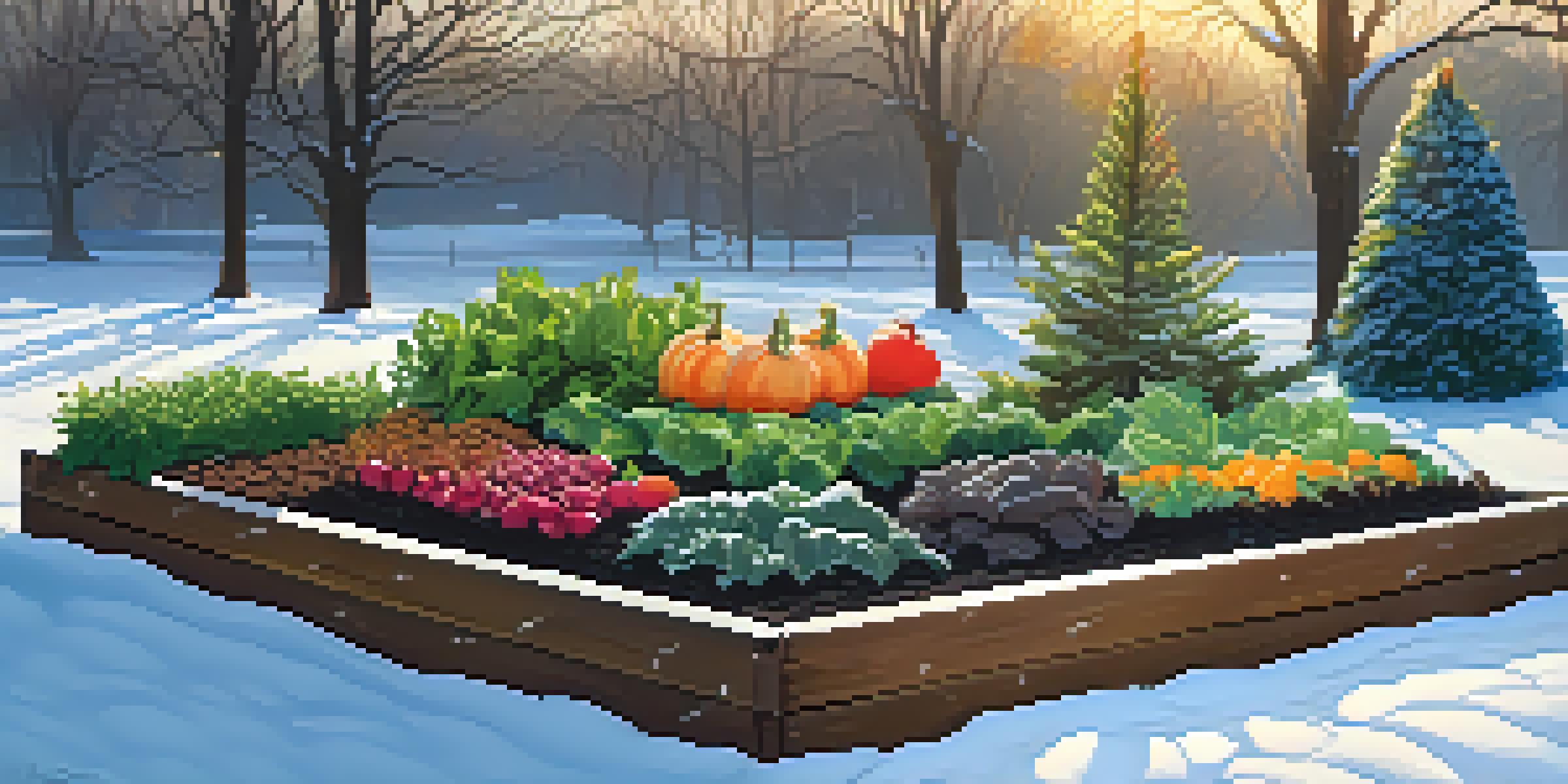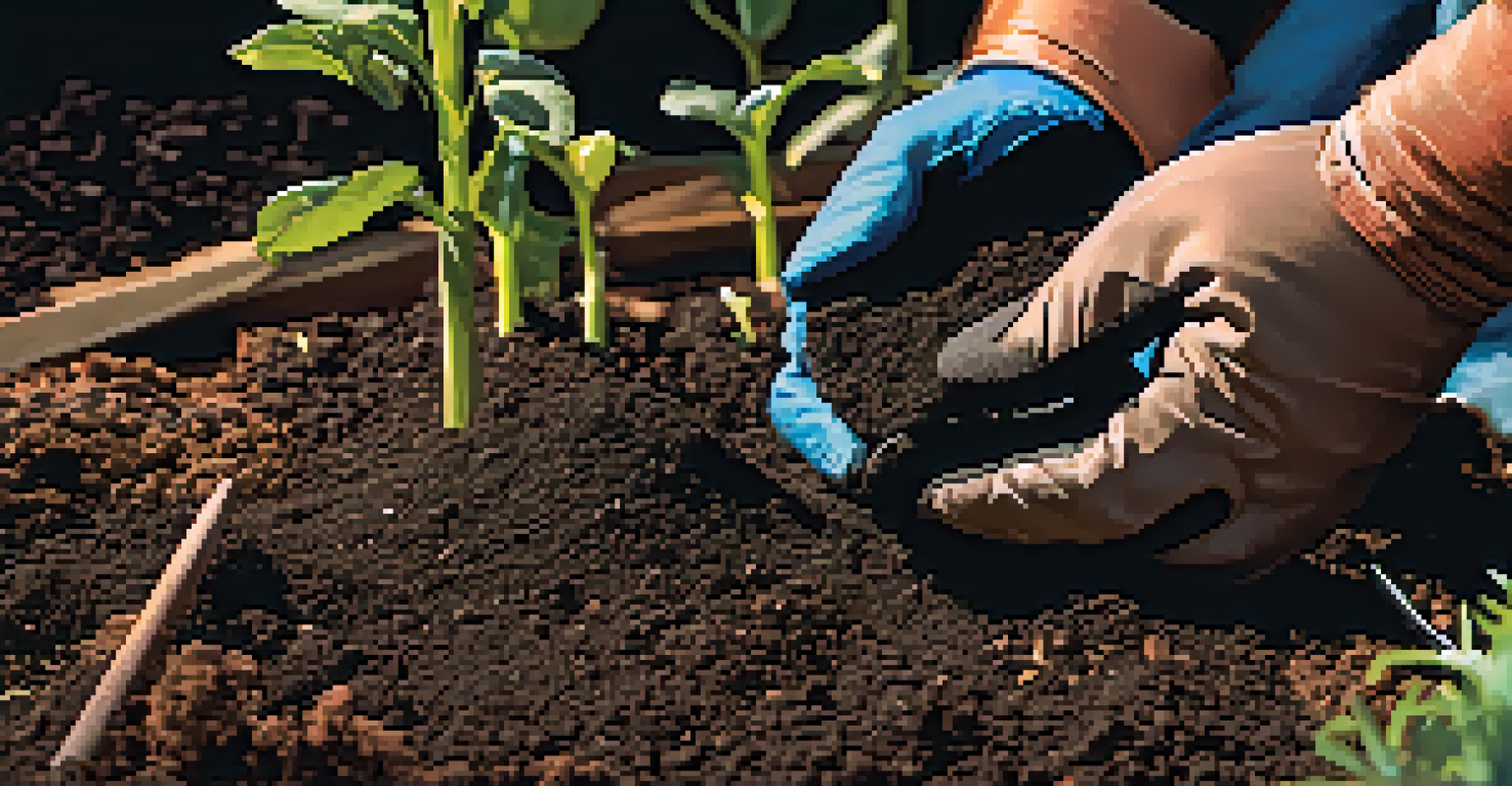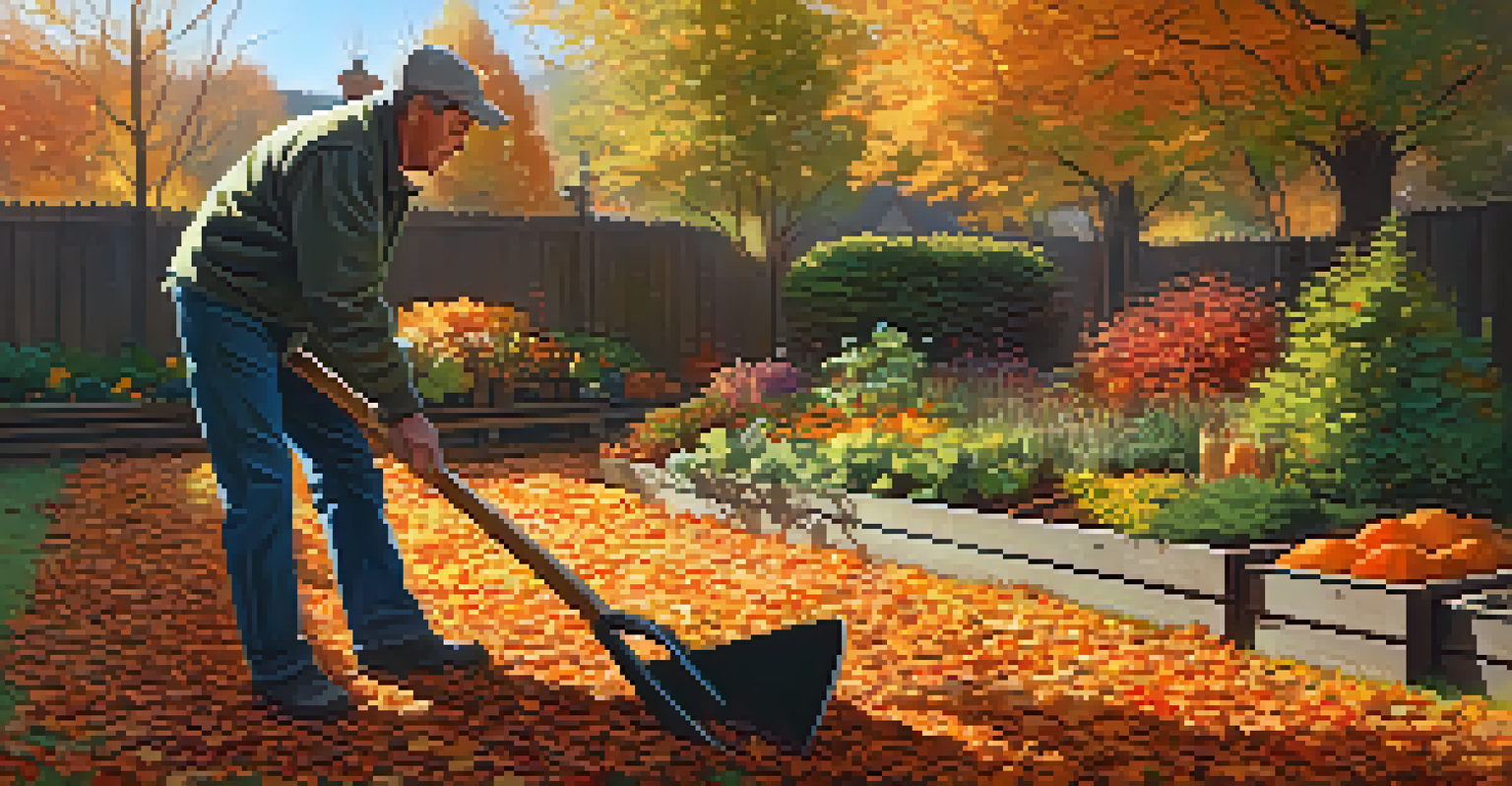Soil Preparation Techniques for Cold Climate Gardening Success

Understanding the Importance of Soil Preparation
Soil preparation is the foundation of any successful garden, especially in cold climates. In regions where winters are harsh, proper soil care can make the difference between a thriving garden and a lackluster one. By taking the time to prepare your soil, you create an environment where plants can access the nutrients they need to grow strong and healthy.
The soil is the great connector of our lives, the source and destination of all. Food, fiber, shelter, biodiversity, and even our atmosphere are all nurtured by the soil.
In colder areas, the soil can become compacted, limiting root growth and water absorption. This makes it crucial to loosen the soil to improve airflow and drainage. A well-prepared garden bed can help plants withstand the challenges posed by frost and cold temperatures.
Additionally, preparing the soil in advance allows you to amend it with organic matter, which enriches the soil and boosts its fertility. This not only benefits your plants but also improves overall soil structure, making it more resilient against the elements.
Testing Soil Health: A Key First Step
Before you dive into planting, it's essential to test your soil's health. Soil tests can reveal pH levels, nutrient content, and any contaminants that might affect plant growth. This information is invaluable as it helps you understand what amendments your soil needs to thrive in a colder climate.

You can easily obtain a soil test kit from local garden centers or online. Collect samples from various spots in your garden, following the kit's instructions for accurate results. Once you have your soil's profile, you can make informed decisions on how to enrich it effectively.
Soil Preparation is Crucial
Proper soil preparation lays the foundation for a thriving garden, especially in cold climates where soil can become compacted.
For instance, if your soil is too acidic, you might need to add lime to balance the pH. On the other hand, if it lacks essential nutrients like nitrogen or potassium, organic fertilizers or compost can be excellent solutions. Knowing your soil's needs sets the stage for successful gardening.
Choosing the Right Amendments for Cold Weather
When it comes to amending soil for cold climate gardening, organic matter is your best friend. Compost, well-rotted manure, and leaf mold can enhance soil structure, moisture retention, and nutrient availability. These organic amendments help create a rich, loamy soil that supports healthy root systems.
Healthy soil is the foundation for healthy plants, animals, and people.
Another important amendment is mulch, which not only protects the soil but also regulates temperature. Mulch acts like a blanket, keeping the soil warmer during chilly nights and helping to retain moisture during dry spells. This is especially beneficial in cold climates where temperature fluctuations are common.
Additionally, consider incorporating cover crops during the off-season. Plants like clover or winter rye can improve soil health by fixing nitrogen and preventing erosion. When tilled into the soil, they add organic matter and nutrients, making them a smart choice for any cold climate gardener.
Tilling and Aerating: Preparing Your Garden Bed
Tilling and aerating your garden bed is a crucial step in soil preparation, especially in colder climates. Tilling involves turning the soil over and breaking it up, which helps to incorporate organic amendments and improve drainage. This process can be done manually with a garden fork or with a machine, depending on the size of your garden.
Aeration, on the other hand, involves creating small holes in the soil to allow air, water, and nutrients to penetrate deeper. This is particularly important in compacted soils, as it encourages root growth and enhances overall soil health. Regular aeration can lead to healthier plants that are better equipped to handle cold temperatures.
Testing Soil Health Matters
Conducting soil tests helps identify pH levels and nutrient content, allowing gardeners to amend their soil effectively for better plant growth.
However, it's essential to avoid over-tilling, as this can disturb beneficial organisms in the soil. A light tilling followed by careful aeration will help you achieve the right balance for a thriving garden bed.
Creating Raised Beds: An Effective Strategy
Raised garden beds are an excellent strategy for cold climate gardening. They provide better drainage and warmer soil, allowing plants to establish roots earlier in the growing season. By elevating your garden, you can protect it from frost and create a microclimate that benefits your plants.
Building raised beds also gives you more control over soil quality and composition. You can fill them with nutrient-rich soil tailored to your plants' needs, ensuring they have the best possible start. Plus, the defined structure makes it easier to manage weeds and pests, which can be a challenge in colder seasons.
To maximize the benefits, consider using materials like untreated wood or stone for your raised beds. These materials not only provide a sturdy structure but also blend beautifully into your garden landscape, enhancing its overall appeal.
Timing Your Soil Preparation for Cold Climates
Timing is everything when it comes to soil preparation in cold climates. Ideally, you want to start preparing your soil in late summer or early fall. This allows ample time for amendments to break down and integrate into the soil before winter sets in. Plus, working on your soil in the cooler months can make the task more manageable.
However, if you missed the fall window, don't worry! You can still prepare your soil in early spring as soon as the ground thaws. Just remember to avoid working with wet soil, as this can lead to compaction and poor structure. Wait until it’s dry enough to crumb easily between your fingers.
Maintain Soil Health Throughout Season
Regularly adding organic matter and monitoring moisture levels ensures your soil remains healthy and supports plant vitality in fluctuating temperatures.
Additionally, consider using row covers or cloches to extend your growing season. These tools can help protect your newly prepared soil and plants from unexpected frosts, giving them a head start as temperatures begin to rise.
Maintaining Soil Health Throughout the Growing Season
After your soil is prepared, maintaining its health throughout the growing season is vital. Regularly adding organic matter, such as compost or mulch, can help replenish nutrients and improve soil structure. This ongoing care ensures your plants have access to the resources they need to thrive, even as temperatures fluctuate.
It's also important to monitor moisture levels and adjust your watering practices accordingly. Cold climate gardens can experience sudden shifts in weather, leading to either excess moisture or drought conditions. Keeping an eye on your soil's moisture content will help you provide the right amount of water for your plants.

Finally, rotating your crops each year can prevent nutrient depletion and reduce the risk of disease. By planting different types of plants in your garden beds, you promote a diverse ecosystem that supports soil health and plant vitality in the long run.